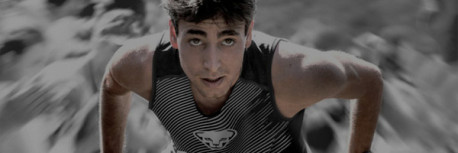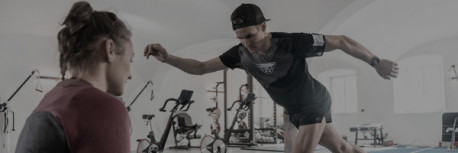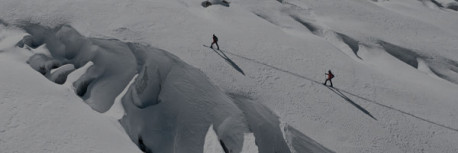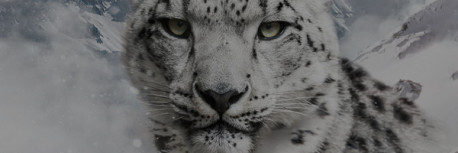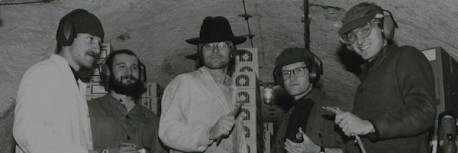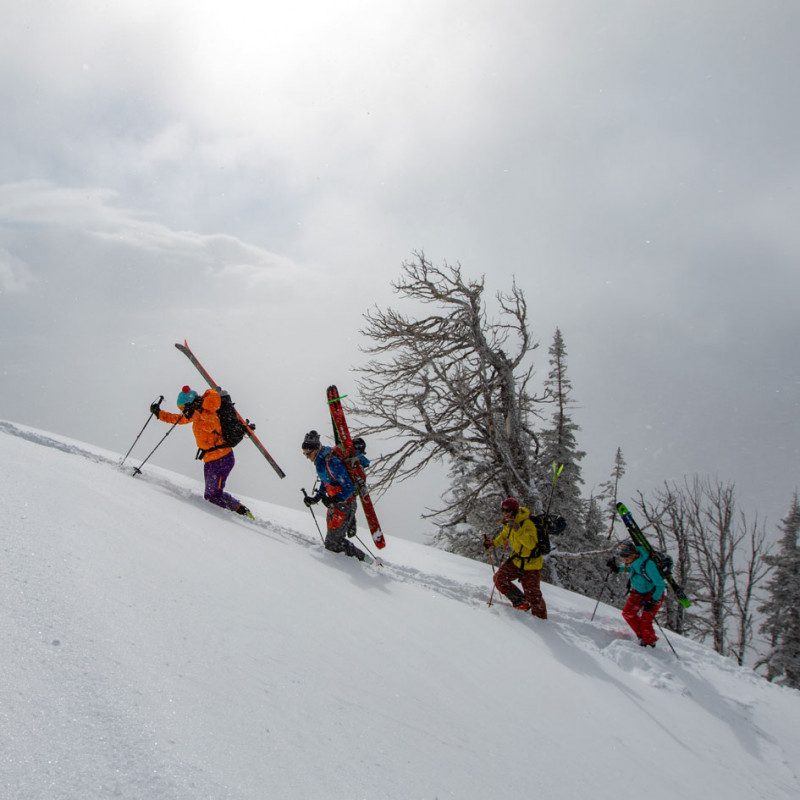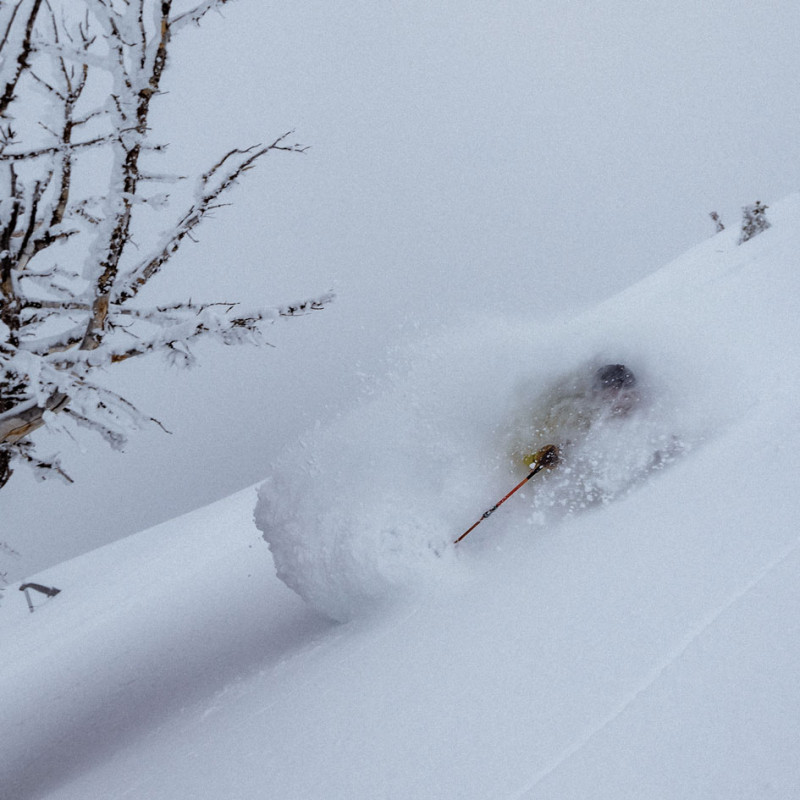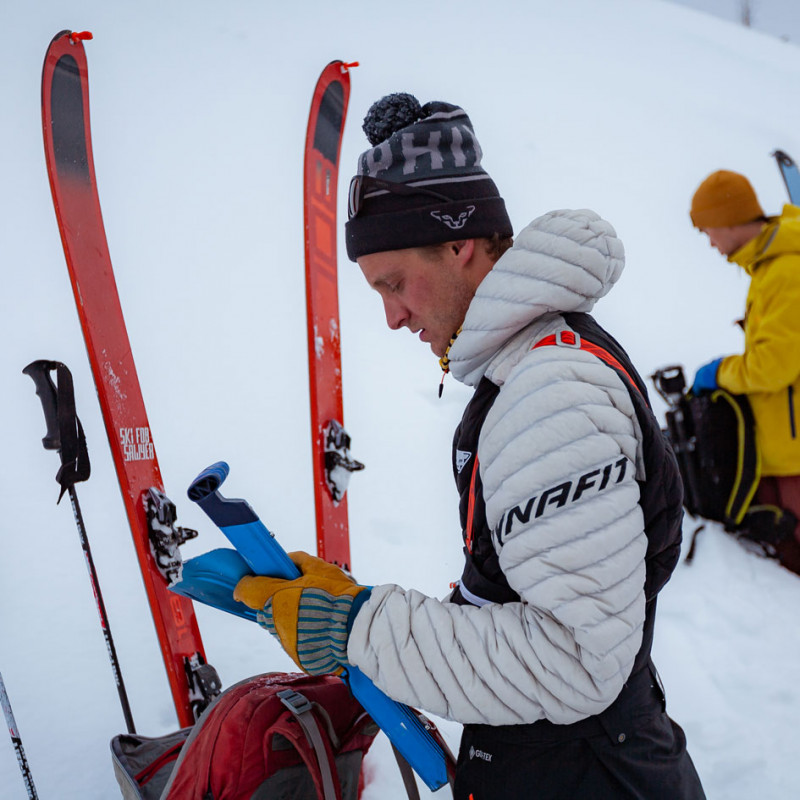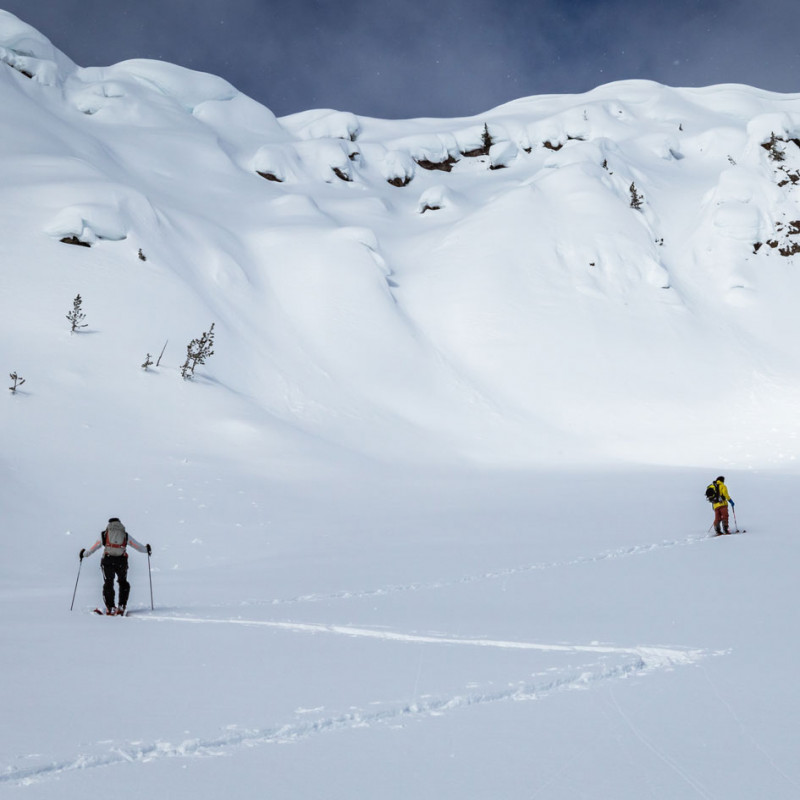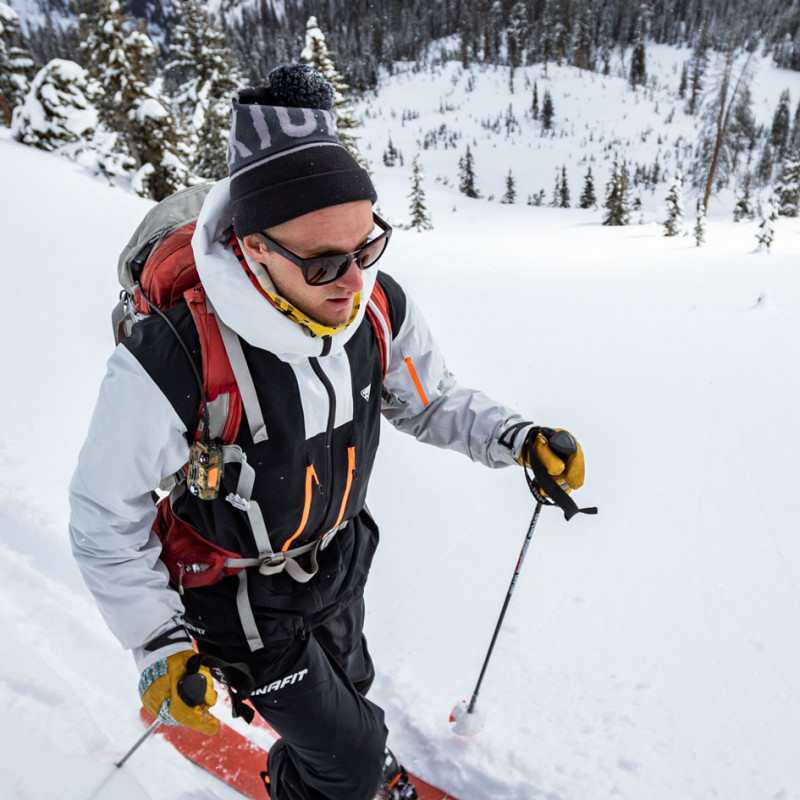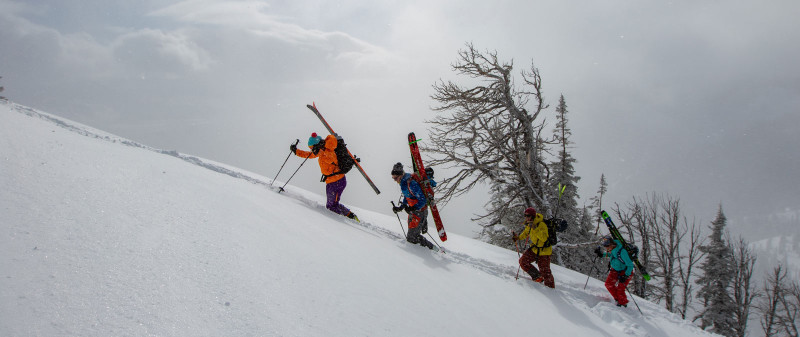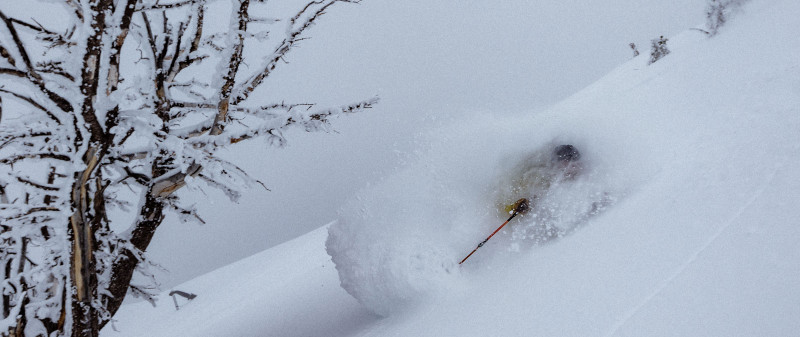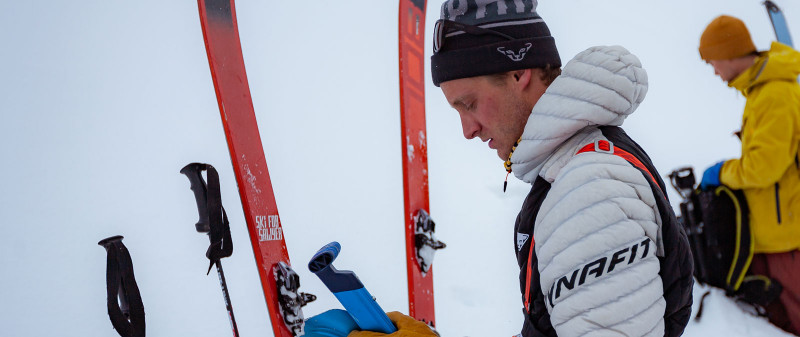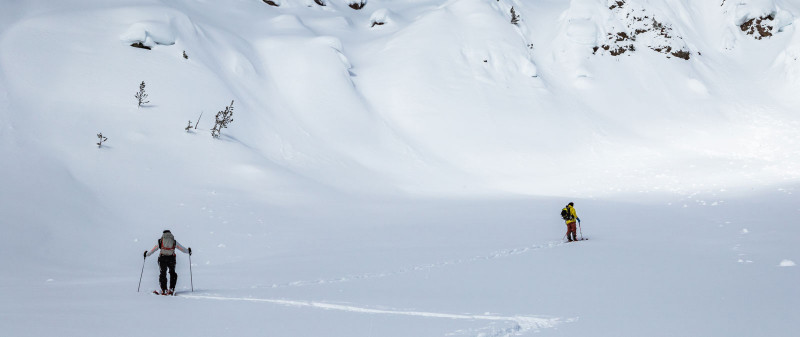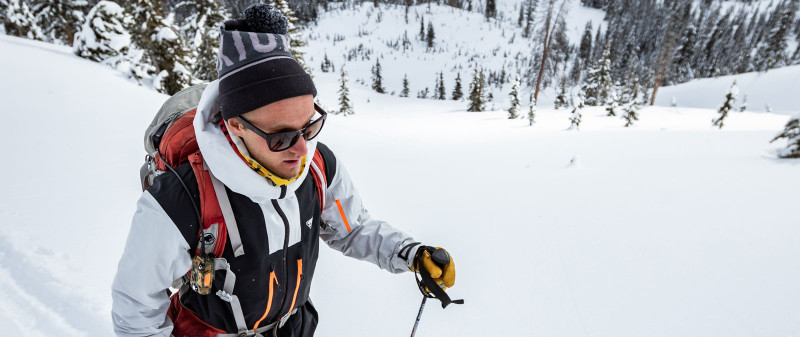Forgotten Ski Touring Routes
The Colter Traverse - a ski touring trip through Greater Yellowstone Wilderness
Snowshoes, a rifle and a thirty pound pack – those were the ingredients for trapper and mountain man John Colter when he pioneered much of the Greater Yellowstone Ecosystem, back in the early years of the 19th century. About two centuries later the athletes and ski touring enthusiasts Riis Wilbrecht and Sawyer Thomas followed his route through the Absaroka, Beartooth, Gros Ventre and Teton Ranges with their own unique perspective and in their own style of adventure. Over the winters of 2018 and 2019 Sawyer and Riis accompanied by friends skinned to these ranges to ski these rarely frequented peaks. While exploring new terrain they faced their mental and physical limits several times. Over the following spring, Sawyer ran the route in a single month all to show that there are still great adventures close to home. Are you interested in learning more about their project and the forgotten ski touring route? Read the full story by Riis Wilbrecht.
John Colter - the legend of a true explorer
Adventure always finds those who go looking for it and adventure always seemed to find John Colter. His story is one that has resonated across nearly two centuries of western mountain culture. My friend Sawyer Thomas and I were born and raised in the Jackson Hole valley that Colter supposedly travelled through. Having been molded by the legacy of mountains and the people who have adventured there long before we were born, we had heard Colter’s name plenty. Since our early years the mountain man was a source of inspiration. For those of you who are not as familiar with Colter’s life and story as we are, let me give you a short roundup about this pioneer and explorer who has made myths in the US history.
In 1804, at the age of 19 years, Colter was hired company to the Lewis and Clark expedition through today’s United States of America. He left his home in the East to ventured West into the unknown. Colter, known for his trades in shooting, hunting, and navigating through the wilderness was imperative to the success of the Lewis and Clark Expedition. Incentivised by fur trading after the expedition had run its course Colter choose to remain in the American West. Colter’s most famous interaction with the Wild West came when he was captured by the Blackfeet Tribe while canoeing the Jefferson river. After killing Colter’s partner, the Blackfeet released a naked and beaten Colter allowing him a small head start until he was pursued by the braves. Colter would hide in a beaver dam overnight and proceed to naked trek the 150 miles back to Fort Raymond. A tale that truly personified the durability of mountain men at the time.
A lesser known Colter tale occurred in the winter of 1807-1808. Through word of mouth from The Crow Tribe, Colter decided to travel South from Fort Raymond to see what mysteries lay beyond the dramatic barrier of peaks and rivers that flowed out of the Absaroka. Colter carried no journal and historians to this day aren’t exactly certain if he ever traveled the route that he claimed. Based on verbal account there are a handful of maps in the Montana State University archive that give a general estimate as to where Colter may have traveled during his solo winter. The area was initially known as Colter’s Hell however we now know it as Yellowstone. In the dead of winter he would travel some 600 miles across some of the most demanding terrain in the Rockies. Colter traveled through the -40 degree winter to achieve a feat no one has completed since.
Off the beaten path - inspired by John Colter
Inspired by the story of John Colter, we wanted to follow his route through the Greater Yellowstone area. Our adventure begins in the same mountains where Colters ended. We had no intention of dressing ourselves in furs and snowshoeing through the Yellowstone wilderness. What Colter did was exceptional, but we are pretty happy to have Gore-tex and pin bindings now. In fact our goal was to modernize the use of the route and show how accessing the mountains has changed in the last two centuries. Born and raised in the Jackson Hole Valley south of Yellowstone we had heard of Colter’s infamous run in with the Blackfeet and knew he was a highly experienced fur trapper, however we couldn’t imagine the full extent of his legacy in the Yellowstone area.
“Our intent was to modernize the use of the route and show how accessing the mountains has changed since Colter’s expedition.”
In April 2018 it was time for us to start our adventure. Sawyer initially talked Morgan Mcgloshlon, Sam Wiley, and myself into attempting a small portion of the route near Cooke City simply to see what was there. Four friends, seven days of winter camping, and peaks I had never seen before, sounded like a pretty epic way to spend spring break. The experience we had over that short first trip made it evident that the entire route needed to be completed again. What started as a school break turned into what we began to call the Colter Project. A year of chasing the ghost of Colter through the mountains would instill a sense of confidence to travel through wilderness like we had never felt before. Our wilderness backgrounds would only prove to be the bare minimum for what we needed to complete the route. Nearly everyday of this project was met with unimaginable challenges and the typical beer at the bottom.
“What started as a fun school break with friends turned into what we began to call the Colter Project”
We found large peaks, wide rivers, and more carnivorous tracks in the mud than we had ever seen before, which reminded us of the potential power of the mountains. Perhaps Colter got lost and accidentally made two young men aimlessly wander or Colter truly desired to contrive an experience unlike anything else. Regardless of Colter’s intentions it made for quite the story.
The modernization of a forgotten ski touring route
The fact that no one knows exactly where Colter went made this project less of a ‘forgotten’ route and more of one open for interpretation. There was a relatively large amount of freedom to choose where to ski and run depending on conditions. For nearly two decades we’ve been curious to explore the mountains that surround our homes and we found ourselves at the point where we believed we could complete the route. A rough outline of the route is displayed above however what maps don’t show is how intimidatingly large and complex the Yellowstone area is. The world’s oldest National Park with its geysers and wild animals blows up the imagination. While it is a main tourist attraction in summer on the main routes with over 3 million people visiting every season, barely anyone comes in winter to go explore the wilderness. We wanted to explore those places we’d seen on a map for ourselves and share our interpretation of them. We decided to craft the experience into a film so that we could broaden our audience and show what the day to day looks like when paving your own path.
Well prepared – but not knowing what to expect
We’ve been preparing for the Colter Route our entire lives. Sawyer and I grew up climbing, running, or skiing new peaks and traverses every chance we got. The most difficult task regarding this project was the research on exactly where we wanted to go. Sawyer dug and dug away to find the right route and the zones that held the best ski terrain. In addition to that we also needed the right gear. After finalizing the plan we set out unaware of what our outcome would be. Everyday on this project was unknown. We didn’t know what the snow was going to do, we didn’t know what terrain and features we would find, and we had no clue as to how hard we would push our limits. We ran into terrifying avalanche conditions, injuries, too hot of snow, and dozens of other obstacles.
“We’ve been preparing for the Colter project our entire lives, but the outcome and challenges where completely unknown.”
In situations like that, it’s important to remain open and accepting of a route change or backing away from the plan. A perfect day was one where we climbed and skied a single line with the camera’s rolling - which we had very few of. However each day that wasn’t “perfect” became a learning experience which we could build off of.
On our final day of the route Sawyer had set out to run 63 miles (100k) on roads from Cooke City to Cody. It was going to be the longest running day he had ever done by nearly 25 miles. Watching Sawyer push himself to absolute empty was something I'd never seen since I met him. Sawyer felt the accomplishment of completing something only one person had done before him. While John Colter’s and Sawyer’s methods differed greatly I am certain the two experienced similar feelings of relief. The most demanding route that I could imagine through the Greater Yellowstone with a perspective only Sawyer could have envisioned. This route inspired us to explore more wild places and to become better athletes and stewards of adventure. Both of us intend to return to the ranges we skied in the future with a greater understanding of the region and with loftier goals.
Colter Ski Touring Route - do's and dont's
We don’t want to share the exact names of the peaks and drainages we used to film this project under the principal of preserving these places and because each individual needs to experience their own adventures in their own ways. However we want to give you some recommendations in case you decide to set your own sails and explore this amazing area.
Don’t try to bite off more than you think you can do in one day. If things go wrong in wilderness areas, the consequences can be catastrophic. Bring plenty of food, water, and a few beers to celebrate hard days. In addition to those very basic advisories, have a good partner. Sawyer and I have trusted each other in the mountains since we were kids and developed our skills one adventure at a time. We weren’t exactly certain where we would ski or how it would be but we did know that if worse came to worst we had each others backs and could fight our way out of the mountains. It’s instrumental to have a ski-lationship in the mountains that are conducive to making the correct decisions.
Be in the best physical shape of your life or have an extremely high tolerance for pain. This isn’t a smooth route and more often than not the best option isn’t a clever one but one that requires you to muscle through the wilderness for hours on end. A prime example of this was on our initial trip for the Colter project just to the South of Cooke City MT. We had woken up at around 5 in the morning to -17 F to go climb and ski the east face of the Thunderer. After a successful morning we returned to camp, packed up our gear, and proceeded on our next 10 mile skin with our packs. We were flipping off of a cornice during a snack break and I (Riis) landed in the backseat and heard a pop in my left knee. What was later discovered to be a torn meniscus, I had to ski on for an additional 6 days. Test your limits before embarking on something of this size.
The most enjoyment was usually found at the end of an extremely long day that had successful footage accompanied by a beer. Skiing wise: we had our most fun when we were skiing new terrain or climbing up a new mountain in search of technical terrain. Cowboys in skiing apparel (or maybe it was the other way around) is what we found in Cody. Cody Wyoming isn’t a skiing destination by any means however the town conveniently sits at the base of the Absaroka Mountains. The road to to Yellowstone from Cody is closed during the winter months but goes just far enough to find good snow and large terrain. We made our biggest mistake by not spending enough time in Cody. With little information on the snow conditions and an exceptionally long drive, Cody seemed the least priority. Once we were there in the winter and returned in the spring for the run it, the magnitude and possibilities became apparent. Aside from that, we left our project open for interpretation so that we couldn’t really make many mistakes, we knew we were going to suffer so with expectations so low there is only one experience to have; a good one.


